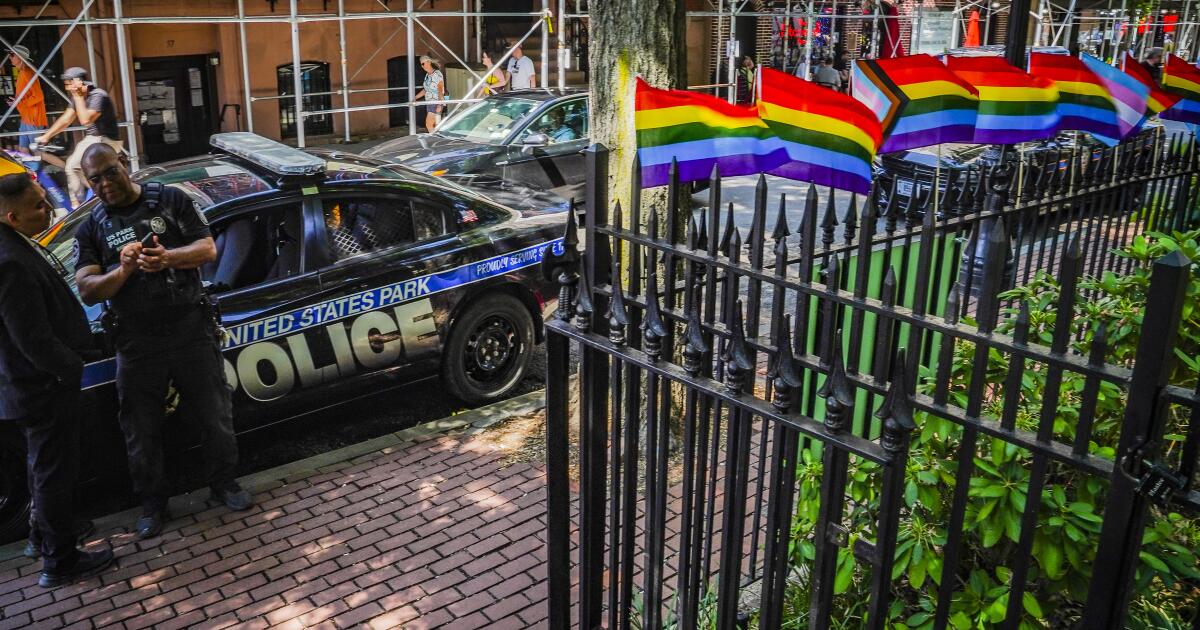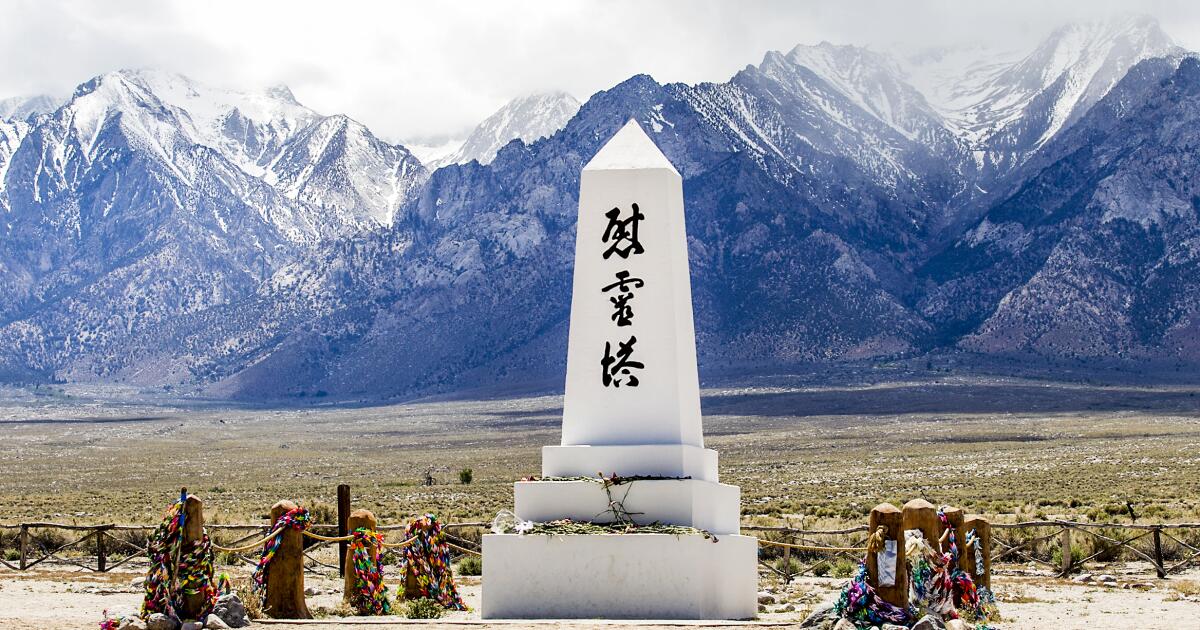Contributor: Uncle Sam wants you … to rat on national parks that reflect true history
Few initiatives of the Trump administration more seriously undermine our understanding of the nation’s past than Executive Order 14023 from March 27, which promises “to restore Federal sites dedicated to history, including parks and museums, to solemn and uplifting public monuments.”
The order directs the Interior secretary to cleanse all National Park Service sites of any signage that “inappropriately disparages Americans past or living” and instead “emphasize the beauty, grandeur, and abundance of landscapes and other natural features.” The Park Service staff was also instructed to purge gift shops of books that could be construed as critical of any American. In a similar vein, the Smithsonian Institution was ordered to remove “improper ideology” from its properties to assure they reflected “American greatness.”
Unwilling to depend on park personnel to enforce the patriotism mandate, the Trump administration is enlisting park visitors to report potentially offending displays and ranger talks that present an insufficiently sanitized account of American history. On June 9, acting National Park Service director Jessica Bowron instructed regional directors to “post signage that will encourage public feedback via QR code and other methods that are viable” concerning anything they encounter at a park site that they believe denigrates the nation’s history. (It is worth noting that when queried about the QR code directive, Interior Secretary Doug Burgum claimed to know nothing of the mandate, although he signed it on May 20.) How will the Trump administration respond if a visitor uses one of the mandatory QR codes to file a complaint?
And that is just the beginning. The Trump administration has also made clear it would like to eliminate entire sites that are not “National Parks, in the traditionally understood sense.” That means targeting those features that lack the grandeur of Yosemite and the Grand Tetons: smaller parks, sites and memorials, many of which honor women and minorities. Generally lacking soaring redwoods or massive gorges, these sites — many in urban areas where President Trump’s revisionist history has not caught on — would seem to describe places in California such as César Chavez National Monument outside Bakersfield, Manzanar National Historic Site and Rosie the Riveter WWII Home Front National Historical Park in Richmond.
Trump and his ahistorical myrmidons — he just mused that the Civil War ended in 1869 — regularly display an abysmal ignorance of basic American history. In their view, such federal (and presumably state) sites should present only a simplistic view of our complex 249-year history, one that virtually ignores the contributions and struggles of hundreds of millions of Americans.
Even before we see how many “tips” the Park Service’s invitation elicits from visitors eager to rat on rangers, the wording of the executive order itself is chilling. Any signage or lecture that “inappropriately disparages Americans past or living” — and who is to say what constitutes disparagement? — must be replaced with rhetoric that emphasizes “the greatness of the achievements and progress of the American people.” Needless to say, the many sites that tell the stories of civil rights and anti-slavery struggles, the Civil War, the role of immigrants, the battles for labor rights and the rights of women and LGBTQ+ people are going to have a challenging time ensuring they in no way offend those willing to acknowledge only uninterrupted “greatness” of the American story. Sometimes our greatness has been manifested by our progress toward a more perfect union — and that story cannot be told without mentioning imperfections.
One need not have a PhD in history to appreciate the dire threat presented by these efforts to replace historical scholarship with uncritical flag-waving. Historians have an obligation to challenge myth, to uncover obscured stories, to give voice to those who were unable to fully participate in earlier eras of the American story because of their race, ethnicity, gender or viewpoints. That is why our government has protected sites including Ellis Island (which President Lyndon B. Johnson added to Statue of Liberty National Monument), Birmingham Civil Rights National Monument and Stonewall National Monument (both recognized by President Obama). Trump’s Orwellian orders seek to undo a half-century of scholarship that revealed a far more complex and nuanced history than the simplified versions taught to generations of schoolchildren.
Fortunately, professional historians have not been cowed like many university leaders, law firms and others who have shamefully capitulated to Trump’s assault on free speech and intellectual integrity. A March statement from more than 40 historical societies condemned recent efforts to “purge words, phrases, and content that some officials deem suspect on ideological grounds [and] to distort, manipulate, and erase significant parts of the historical record.”
The national parks consistently rate as one of the most popular features of American government. Neither their rangers nor their exhibits should be intimidated into parroting a sanitized and distorted version of the nation’s past. As the historians declared, “We can neither deny what happened nor invent things that did not happen.” Americans should use those QR codes to send a clear message rejecting efforts to manipulate our history to suit an extremist ideological and political agenda.
John Lawrence is a visiting professor at the University of California’s Washington Center and a former staff director of the House Committee on Natural Resources.


